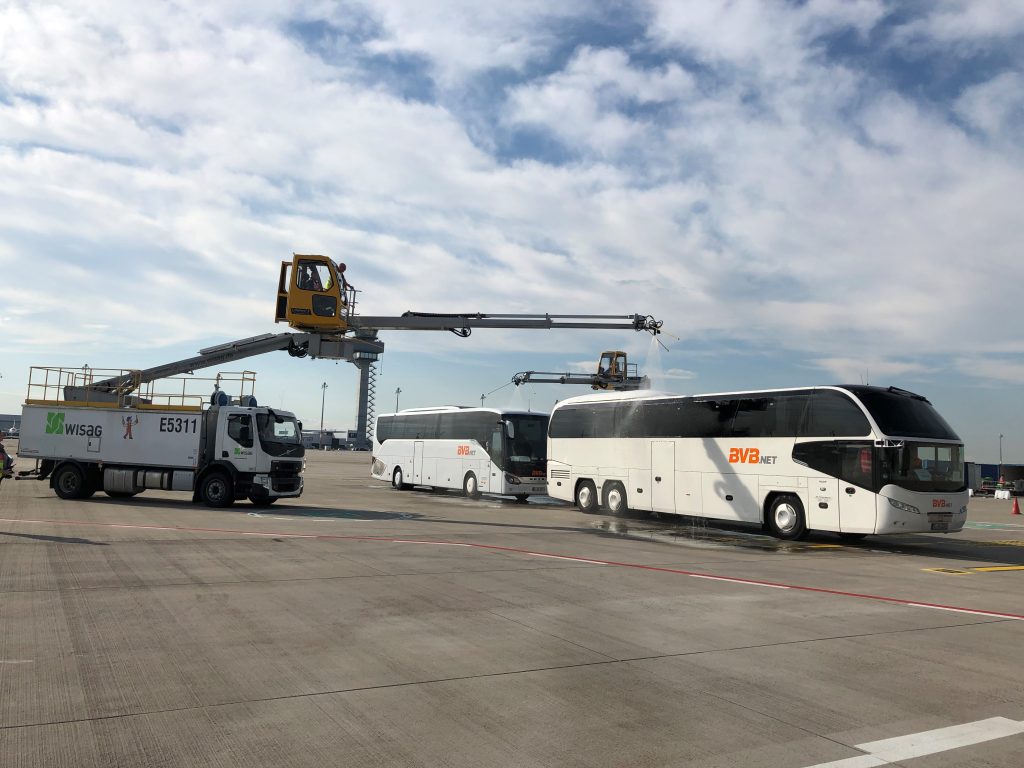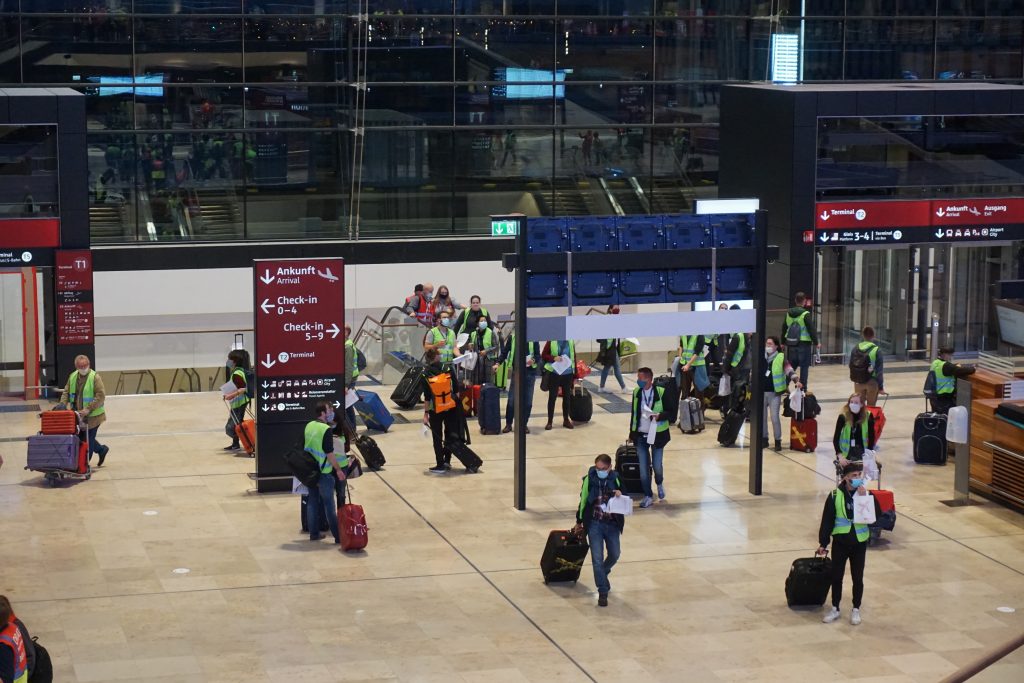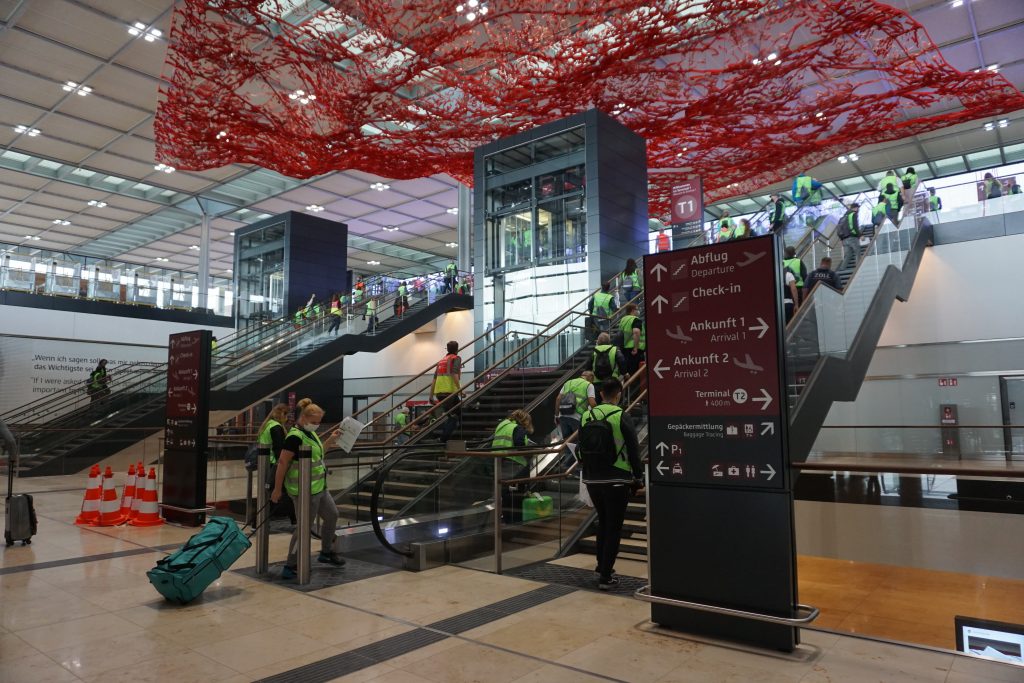It was a rather difficult and bumpy road to the opening of Berlin Brandenburg Airport Willy Brandt (BER) at the end of October 2020. Many challenges had to be overcome during 14 years of construction and several canceled opening dates. In the end, a custom-made Operational Readiness and Airport Transfer (ORAT) program ensured a successful inauguration of the German capital’s new airport.
The airport operator was prescient in installing an experienced team to accompany the operational readiness. They restarted the ORAT program two years prior to the opening. Shortly after the airport set up the ORAT team, Dornier Consulting joined to lead the program management and to coordinate 11 specialized working groups from landside to airside, from security to commercial and from IT to facility management.
The mission was clear: turn a long-standing and difficult construction site of an airport, built to handle more than 35 million passengers per year and redesigned several times to meet changing requirements, into
a fully operational airport.
From the beginning, Dornier Consulting encountered an extremely motivated team, even though many team members had already been involved in several attempts to open the airport. All of them were highly passionate about their job and the common goal.
The following tips may be considered success factors for handling such complex ORAT projects to overcome difficulties encountered along the way.
1. Get support from the management
Securing support from all involved parties, most of all the upper management, is most important. Support from departments outside of operations, such as commercial and IT, is also absolutely crucial. In addition, set up a team of people fully dedicated to ORAT and assign clear tasks, roles and responsibilities. The team members should not be involved in the ongoing daily business of the airport.
Never underestimate the time needed for preparing your ORAT program with all necessary steps, such as trials, airport transfer requirements, technical approvals, regulatory approvals, etc. Professional handling of requirements and interfaces is key.
2. Prioritize
Focus on what is absolutely necessary to bring the facilities into service. Do not approve changes in design that require substantial changes to the infrastructure or new systems at the last moment. For example, at BER the overall capacity already needed to be expanded before opening as a result of the extended construction period. It was decided to build Terminal 2 separate from the main construction site to add further capacity but to not jeopardize the completion of the main terminal.
To avoid further complications caused by redesign and replanning, a system freeze was installed. Unavoidable changes could only be implemented once all relevant experts decided to do so. A change advisory board was established to formalize this process.

3. Practice, practice, practice
Training of staff and familiarization with the new site and infrastructure needs to be started early. In the case of BER this was difficult to implement due to ongoing operations at Berlin’s existing Schönefeld and Tegel airports and Covid-19-related furlough schemes. Strong commitments by the operational departments of the airport and by airlines, ground handlers, police authorities and other stakeholders to make staff available for the trials and training sessions was paramount to obtain meaningful trial results. The airport system and processes were tested by close to 10,000 volunteers with some 180,000 pieces of luggage over 47 trial days. Each volunteer was given a scenario to follow, where the entire process from check-in through to boarding and deboarding, including baggage collection, was simulated. Regularly, a special situation such as losing the boarding pass or a transfer to another flight was added.
Adapting the infrastructure to adhere to physical distancing and stringent hygiene requirements was an additional necessary step, which could not have been anticipated. Running test trials under Covid-19 conditions posed an additional challenge, as fewer people could take part in the tests.
4. Train the people and challenge the system
Standard operating procedures are in place, but can they be implemented as planned? Do fallback procedures address all required processes? Trials must be designed to challenge the system in terms of load and also stress participants, to verify procedures, adjust accordingly and ensure a continuous stakeholder knowledge transfer. Set aside sufficient time for the trials to enable both an increase in complexities over the trial period and a learning curve for all involved. The devil is in the details!

5. Establish an effective risk management process
The program management focus must be on the detailed identification and recording of all risks and unresolved open issues. At BER, close to 1,500 such open items had to be dealt with prior to opening. Diligent follow-up and tracking of the timely implementation for each item is vital. It is prudent to facilitate stakeholder agreement on the priorities.
6. Collaboration is the key
ORAT is very much dependent on the cooperation of all stakeholders involved. During trials and the meaningful evaluation of the findings, an honest and transparent communication between all parties is a must. During the BER trials a very commendable team spirit developed under the lead of the ORAT team. Realigning processes as a result of finding common ground and agreeing quickly on pragmatic solutions with the input of all parties involved was a winning strategy.
Read more about the opening of BER here.

